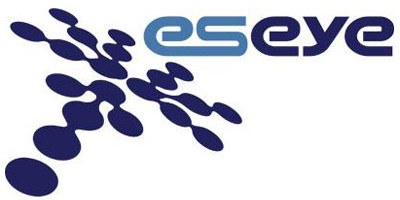Eseye: A Game Changer in the Digital World

Eseye, an M2M technology and service provider, is changing the game in the digital world
Digital transformation has opened up new avenues for companies to specialize in and truly take advantage of the evolution. Eseye, a London-based machine-to-machine (“M2M”) technology and service provider, has been one of the companies that have been able to carve itself a large part of the digital pie with customers in 96 countries. As proof of its growing prominence, the company was invited to become a part of the steering committee for CISCO’s prestigious Internet of Things World Forum in 2014.
The basic premise of Eseye is simple: it connects devices to the Internet via cellular technology so that the machines become “smart” and can be controlled remotely. The company achieves this via selling hardware (such as SIM and modems) and managing and analyzing the data. Its proprietary technology AnyNet SIM is highly secure and can be routed into most cellular network operators globally. Furthermore, the unique features of the SIM allow the customers of Eseye (who are the providers of the devices to be controlled) to control their devices in hard to reach locations in emerging markets, thereby opening up new geographies for these customers. Eseye sells a suite of products that complement the SIM and create a seamless and reliable ecosystem for the customers.
As an example, Eseye partnered with M-KOPA, a prominent pay-as-you-go solar unit provider in Africa, by embedding its chips into M-KOPA’s solar lamps. This technology allowed customers to pay upfront through their cell phone and “turn on” the solar lamp for access. This is critical for M-KOPA’s business model of low cost, high volume production that targets the base of the pyramid in Africa, which is unable to access credit to pay for these kinds of services. Moreover, M-KOPA can now monitor its units remotely and fix most issues without needing to send in a repairman. With its vast impact on development and the base of the pyramid, Eseye has been able to raise financing from leading impact investors such as Accion’s Frontier Investments Group to enable the company to scale and fully realize its vision of connecting the world.
By literally embedding itself to the customer’s business, Eseye makes its customers extremely sticky with high switching costs. Its devices, which perform well globally and are controlled from a central location, can be deployed to new geographies easily, which allows the company to scale rapidly. Eseye’s customers now range from pay-as-you-go electric vehicle charging network Charge Your Car to medical refrigerator provider Dulas, which worked with Eseye to create a system to report the temperature inside its refrigerators.The company prides itself on connecting 12% of UK’s streetlights and 90% of UK’s pre-paid smart meters.
M2M is a large component of the Internet of Things (“IoT”), which McKinsey Global Institute has named as one of the top 12 most disruptive technologies for the next 10 years. Eseye looks like it has positioned itself to be one of the key figures leading this disruption: a clear winner of digital transformation.




Very interesting! I would be curious to see what is the future for Eseye in the internet of things. Clearly they are in the right place by providing hardware and service that enables devices to connect with each other. A natural extension I would see is data analytics that allow users not only to control, but also provide meaningful insights on the use of the devices. This would be particularly helpful with infrastructure in developing world, where power generators could be shared among villages and communities. Another idea would be that machines would notify users of extra capacity and price could be set based on current demand and supply. Nevertheless, given software requirements needed to make machines smart I would be curious to see what Eseye will choose in the future. I could see three options: 1) stick with hardware and allow other players to provide more sophisticated software 2) focus on software that works with different types of hardware; 3) combine both. There are downsides to all three. If you focus on software you loose high switching cost. If you just do hardware, you might become a commodity. And what if device producers themselves will embed smart chips in all their products? The third sounds great, but actually very difficult to do in real life. Really curious what Eseye will do. Thanks for posting!
Damla, thanks for writing about this interesting company! M2M is a fascinating sector, and I believe that many venture capitalists who are generally well-versed in asset-light tech companies will have a hard time navigating this world of interconnected hardware.
Ola, your points are well taken. From the post, it is not clear that their proprietary hardware would be difficult to reverse engineer, but it seems likely that their early mover status and resulting access to data may give them an advantage compared to later adopters. I am reminded of the energy management systems my former company developed to control the batteries we produced. While the hardware we bought was necessary to ensure accurate communication between the individual battery cells and the control systems on a number of parameters such as charge/discharge rates, voltage, and temperature, the real value added was to aggregate this information over time to refine charging protocols, improve operations, and extend battery life.